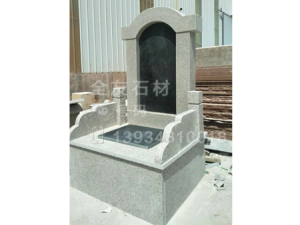Company Name: Hunyuan County Quanyou Stone Processing Factory
Contact: Mr. Wang
Tel: 13754914913
Company fixed line: 0352-8425006
Company fax: 0352-8425088
Company mailbox: 935913883@qq.com
Company address: Industrial Park, Hunyuan County, Datong City, Shanxi Province
A brief discussion on the origin of the inscriptions on traditional tombstones and the content of the inscriptions
Traditional tombstone inscriptions have a long history. Steles appeared as early as the Spring and Autumn Period and the Warring States Period. At that time, the monuments, such as the shadow stele in the palace hall, the animal stele in the ancestral temple, and the lower coffin stele beside the tomb, were not inscribed with words. Later, some people engraved the corresponding words, and various inscriptions gradually formed. Inscriptions on inscriptions can be divided into broad and narrow senses. Inscriptions in the narrow sense only refer to the words written for the manufacture of inscriptions, and inscriptions in the broad sense refer to everything engraved on the inscription. Text.
In my country, steles have been erected since the Spring and Autumn Period and the Warring States Period, but the steles in ancient palaces were not engraved with texts, and were only used to measure the time of the sun and shadow; and the steles in ancient ancestral temples were not inscribed with words, but were used to tie sacrifices. The steles on the tombs are only wooden pillars, with holes cut so that the reel can be put through the rope. When the coffin is lowered, the reel is twisted to make the coffin fall into the tomb smoothly. The stele with written characters is called "carved stone". The stele originally refers to the vertical stone. According to legend, Qin Shihuang erected a characterless stele on the top of the Jade Emperor in Qin Mountain. The characters engraved on the stele are called stele inscriptions. It was written for the purpose of engraving a stele. An article that was not written for the purpose of erecting a stele, although it was engraved on the stele, could not be called a stele inscription.
From the Qin and Han dynasties, the tree stele was used to inscribe inscriptions. If there is a stele, there must be inscriptions, so we will not pay attention to the inscriptions without words. Over time, the inscriptions and the stele are combined into one, and the stele refers to the stele inscription. The stele was originally only used by the exploiting classes, The common people are not qualified to erect monuments, nor can they afford to erect monuments. It was not until later that the custom of carving monuments became popular among the people. There are many kinds of inscriptions on inscriptions. The new inscription. Next, we will introduce the situation of the inscription in detail. Since ancient times, the inscription can be said to be eclectic in form.
traditional tombstoneGenerally, it consists of three parts: the main body, the main body, and the signature.
1. Head-up: The head-up mainly writes the deceased's post, job, etc., and some can be omitted.
2. Text: The text mainly states the title of the deceased and the name of the deceased by the person who erected the monument.
3. Signing: The sign indicates the identity and name of the person who erected the monument. It can be written or not written when the monument is erected.

Previous: What should be paid attention to in the content of traditional tombstone inscriptions
下一条: Black granite manufacturers describe the evaluation criteria of granite
Related News
- Cemetery tombstone manufacturers: What are the disadvantages of using paraffin to maintain stone
- Black granite is gradually becoming popular
- What is the existence of Zhangqiu Black Tombstone?
- Quanyou Stone introduces you to the advantages of black tombstones
- What are the ways to prevent Chinese black tombstones from turning white?
- Looking for traditional tombstone carvers to pay tribute to the "craftsman spirit
- How to deal with the macula on Chinese black tombstones
- Repair method for small gaps in black granite tombstones
- Cemetery tombstone manufacturers: knowledge about funeral taboos
- How to Eliminate the Influence of Salt on Chinese Black Tombstones
- What should be paid attention to in the content of traditional tombstone inscriptions
- Zhangqiu black stone to remove moss tips
- Talking about the processing process of cemetery tombstones and how to select materials
- Zhangqiu black stone tablet manufacturers briefly describe how to maintain the stone tablet carving machine
- How to distinguish the skills of domestic magic red and Indian magic red
- Do you know how to maintain the tombstone carving machine?
- Will Chinese black tombstones "fading"? Look here
- Tombstone Feng Shui knowledge you need to know
- Let you know what is the 5-line color of the tombstone
- How to clean stone in Chinese black tombstone



